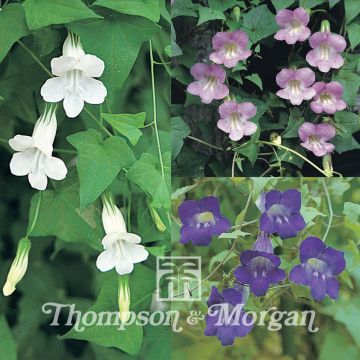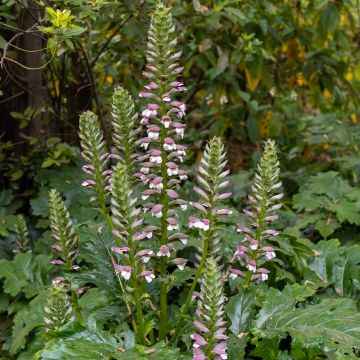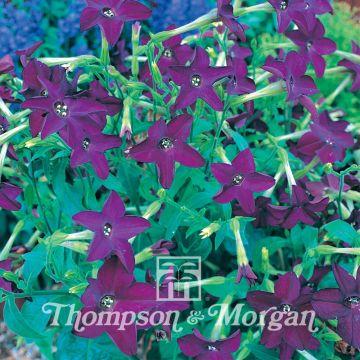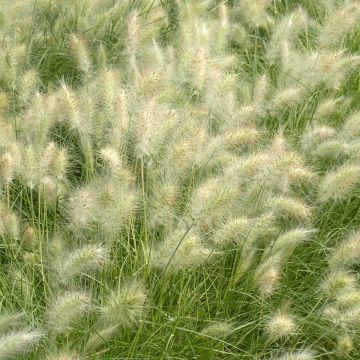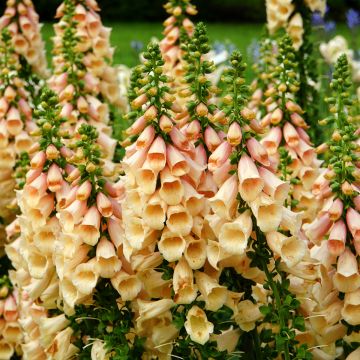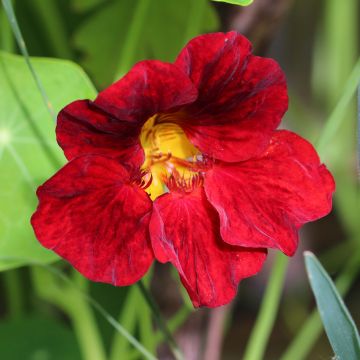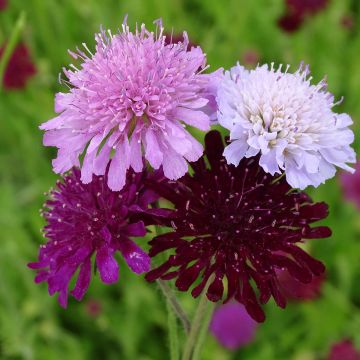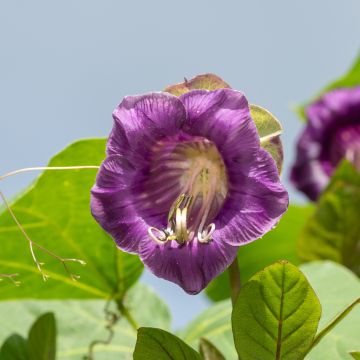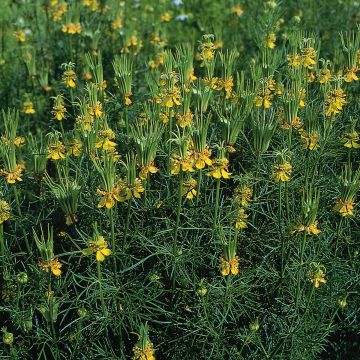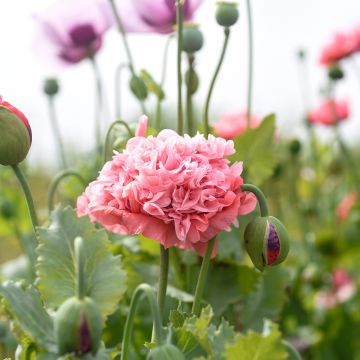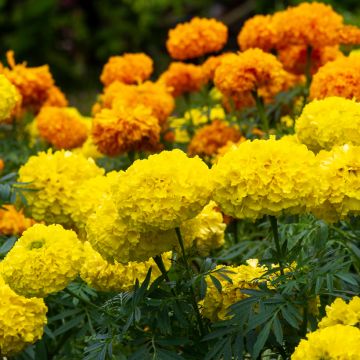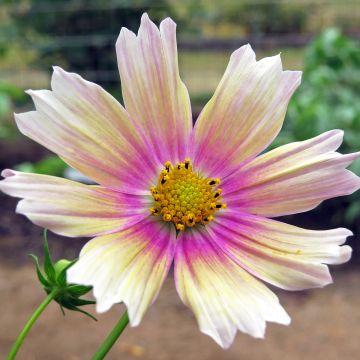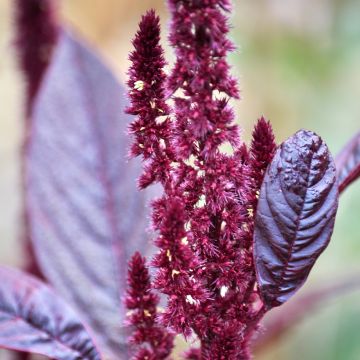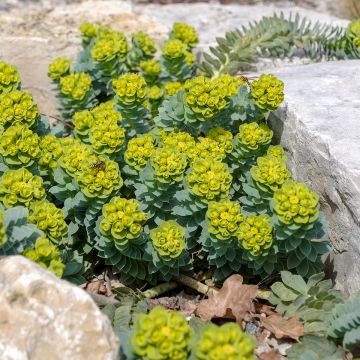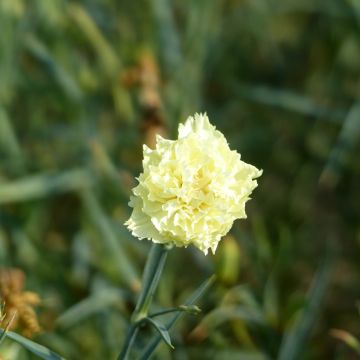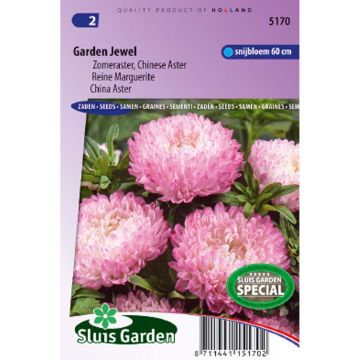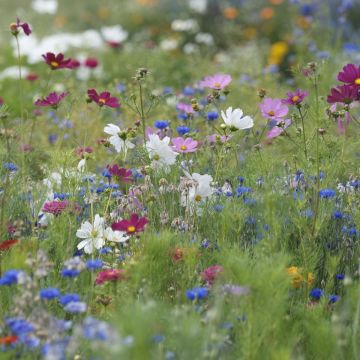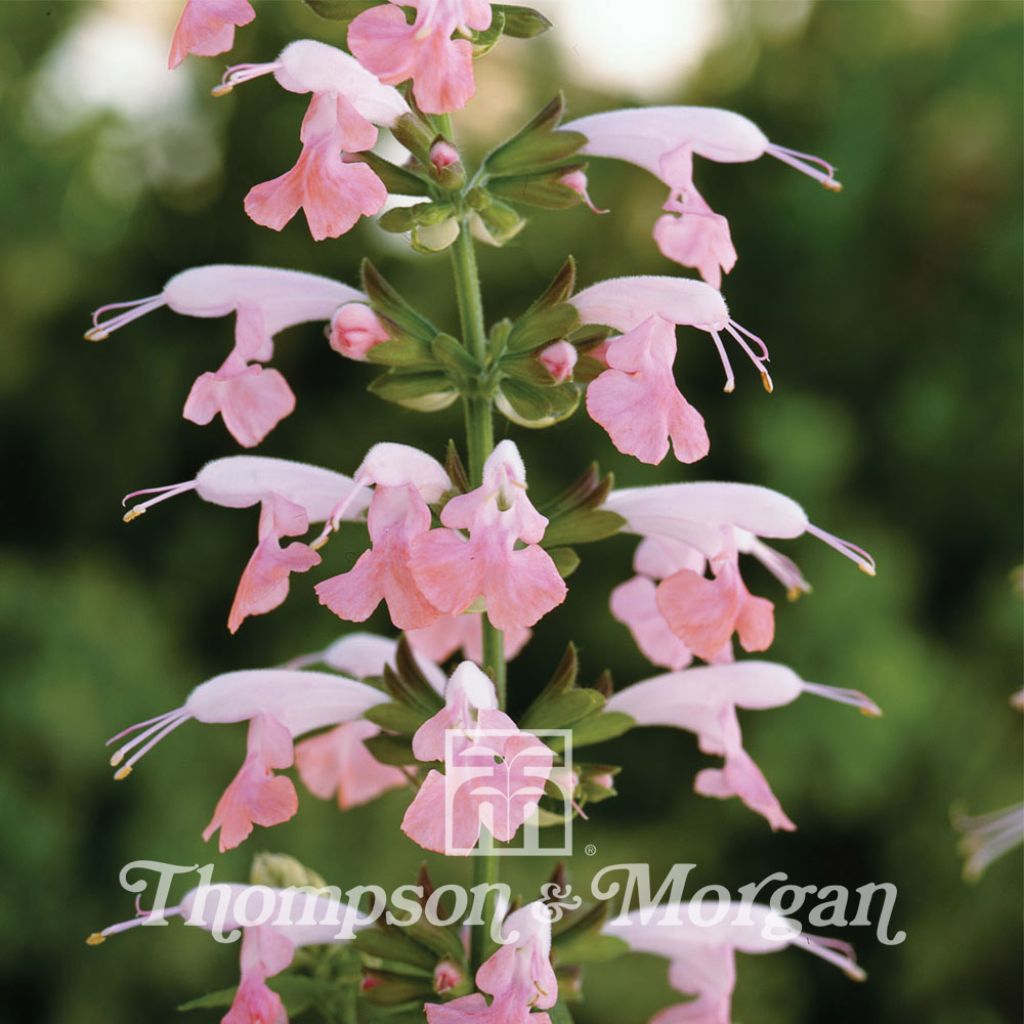

Salvia Summer Jewel Pink
Salvia coccinea Summer Jewel Pink
Salvia coccinea Summer Jewel Pink
Scarlet Sage, Texas Sage, Tropical Sage, Blood Sage
The quality of the seeds is not in question, but the very mild weather and now very cold temperatures are slowing down the process.
sylviane claverie, 25/04/2016
This item cannot be shipped to the selected country
Dispatch by letter from €3.90
Delivery to Corse prohibited
More information
Schedule delivery date,
and select date in basket
This plant carries a 6 months recovery warranty
More information
We guarantee the quality of our plants for a full growing cycle, and will replace at our expense any plant that fails to recover under normal climatic and planting conditions.
Seed-only orders are dispatched by sealed envelope. The delivery charge for seed-only orders is €3.90.
Delivery to Corse prohibited: UE law prohibits the import of this plant from mainland France to Corse as part of the fight against Xylella fastidiosa. Please accept our sincere apologies.
More information
Does this plant fit my garden?
Set up your Plantfit profile →
Description
Bushy and compact, the Salvia coccinea 'Summer Jewel Pink', also known as Summer Jewel Pink Texas sage, is a short-lived perennial plant most commonly grown as an annual. This recent variety stands out for its rapid flowering and more compact habit. Its diaphanous flowers, very fresh pale pink, appear from June to October, gathered on long upright spikes above a hairy and aromatic, heart-shaped foliage. While this plant, very nectar-rich, is valuable for natural gardens, it is also stunning in perennial or annual flower beds and containers. It will thrive in light, well-drained soil, even sandy, and in full sun.
The Salvia coccinea, sometimes called scarlet sage, is a plant from the mint family probably native to Mexico, which has become naturalised in the southeastern United States and various states in South America. This naturally polymorphous plant has given rise to numerous horticultural selections. The 'Summer Jewel Pink' cultivar is the latest addition to the Summer Jewel series, and a beautiful horticultural achievement often awarded by professional juries. It is a short-lived herbaceous plant, erect and bushy, 45 cm (18in) tall and 30 cm (12in) wide. The entire plant is fragrant. The flowering period extends from June to October. The tubular and bilabiate flowers are arranged in fairly loose whorls along a vertical stem emerging from the foliage. The corolla displays a fresh and delicate pale pink hue, accentuated by prominent white stamens. The flowers are followed by the formation of tiny brown seeds, hidden in the calyxes. The decussate leaves (opposite leaves whose successive pairs cross at right angles) are arranged in a staggered pattern on the stem, and are born in pairs. They are pubescent, heart-shaped or triangular, with dentate margins.
The Texas sage is an original species with a light and refined appearance. It is the queen of sunny and somewhat dry locations, like its cousins Salvia officinalis or Salvia microphylla, with which it will create beautiful, very natural flower beds. It can be sown with cornflowers, blue perennial flax, centaureas or snapdragons to quickly create very colorful displays. Its naturally compact habit makes it an ideal variety for pots or planters.
Report an error about the product description
Flowering
Foliage
Plant habit
Botanical data
Salvia
coccinea
Summer Jewel Pink
Lamiaceae
Scarlet Sage, Texas Sage, Tropical Sage, Blood Sage
Cultivar or hybrid
Other Thompson and Morgan seeds
Planting and care
Sow Texas sage from February to April in pots or containers on the surface of a light and well-drained specific research area soil, and cover the seeds with a fine pinch of finely sifted soil.
Place the young plants in a mini-greenhouse at 20 to 25°C (68 to 77°F) until germination, which usually takes between 7 and 21 days.
When the plants are large enough to handle, transplant them into 8 cm (3in) pots and grow them in cooler conditions.
When all risk of frost has passed, gradually acclimatise the scarlet sage plants to outdoor conditions for 7 to 10 days before planting them outside.
Plant the sage plants with a spacing of 30cm (12in) between each plant. Install them in any light, even sandy, climate, well-drained soil, and in a very sunny exposure. Flowering will occur ten to twelve weeks after sowing.
Sowing period
Intended location
-
, onOrder confirmed
Reply from on Promesse de fleurs
Flower seeds
Haven't found what you were looking for?
Hardiness is the lowest winter temperature a plant can endure without suffering serious damage or even dying. However, hardiness is affected by location (a sheltered area, such as a patio), protection (winter cover) and soil type (hardiness is improved by well-drained soil).

Photo Sharing Terms & Conditions
In order to encourage gardeners to interact and share their experiences, Promesse de fleurs offers various media enabling content to be uploaded onto its Site - in particular via the ‘Photo sharing’ module.
The User agrees to refrain from:
- Posting any content that is illegal, prejudicial, insulting, racist, inciteful to hatred, revisionist, contrary to public decency, that infringes on privacy or on the privacy rights of third parties, in particular the publicity rights of persons and goods, intellectual property rights, or the right to privacy.
- Submitting content on behalf of a third party;
- Impersonate the identity of a third party and/or publish any personal information about a third party;
In general, the User undertakes to refrain from any unethical behaviour.
All Content (in particular text, comments, files, images, photos, videos, creative works, etc.), which may be subject to property or intellectual property rights, image or other private rights, shall remain the property of the User, subject to the limited rights granted by the terms of the licence granted by Promesse de fleurs as stated below. Users are at liberty to publish or not to publish such Content on the Site, notably via the ‘Photo Sharing’ facility, and accept that this Content shall be made public and freely accessible, notably on the Internet.
Users further acknowledge, undertake to have ,and guarantee that they hold all necessary rights and permissions to publish such material on the Site, in particular with regard to the legislation in force pertaining to any privacy, property, intellectual property, image, or contractual rights, or rights of any other nature. By publishing such Content on the Site, Users acknowledge accepting full liability as publishers of the Content within the meaning of the law, and grant Promesse de fleurs, free of charge, an inclusive, worldwide licence for the said Content for the entire duration of its publication, including all reproduction, representation, up/downloading, displaying, performing, transmission, and storage rights.
Users also grant permission for their name to be linked to the Content and accept that this link may not always be made available.
By engaging in posting material, Users consent to their Content becoming automatically accessible on the Internet, in particular on other sites and/or blogs and/or web pages of the Promesse de fleurs site, including in particular social pages and the Promesse de fleurs catalogue.
Users may secure the removal of entrusted content free of charge by issuing a simple request via our contact form.
The flowering period indicated on our website applies to countries and regions located in USDA zone 8 (France, the United Kingdom, Ireland, the Netherlands, etc.)
It will vary according to where you live:
- In zones 9 to 10 (Italy, Spain, Greece, etc.), flowering will occur about 2 to 4 weeks earlier.
- In zones 6 to 7 (Germany, Poland, Slovenia, and lower mountainous regions), flowering will be delayed by 2 to 3 weeks.
- In zone 5 (Central Europe, Scandinavia), blooming will be delayed by 3 to 5 weeks.
In temperate climates, pruning of spring-flowering shrubs (forsythia, spireas, etc.) should be done just after flowering.
Pruning of summer-flowering shrubs (Indian Lilac, Perovskia, etc.) can be done in winter or spring.
In cold regions as well as with frost-sensitive plants, avoid pruning too early when severe frosts may still occur.
The planting period indicated on our website applies to countries and regions located in USDA zone 8 (France, United Kingdom, Ireland, Netherlands).
It will vary according to where you live:
- In Mediterranean zones (Marseille, Madrid, Milan, etc.), autumn and winter are the best planting periods.
- In continental zones (Strasbourg, Munich, Vienna, etc.), delay planting by 2 to 3 weeks in spring and bring it forward by 2 to 4 weeks in autumn.
- In mountainous regions (the Alps, Pyrenees, Carpathians, etc.), it is best to plant in late spring (May-June) or late summer (August-September).
The harvesting period indicated on our website applies to countries and regions in USDA zone 8 (France, England, Ireland, the Netherlands).
In colder areas (Scandinavia, Poland, Austria...) fruit and vegetable harvests are likely to be delayed by 3-4 weeks.
In warmer areas (Italy, Spain, Greece, etc.), harvesting will probably take place earlier, depending on weather conditions.
The sowing periods indicated on our website apply to countries and regions within USDA Zone 8 (France, UK, Ireland, Netherlands).
In colder areas (Scandinavia, Poland, Austria...), delay any outdoor sowing by 3-4 weeks, or sow under glass.
In warmer climes (Italy, Spain, Greece, etc.), bring outdoor sowing forward by a few weeks.

































